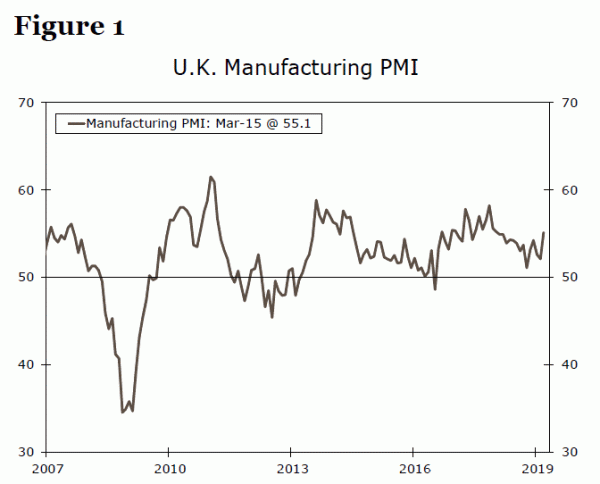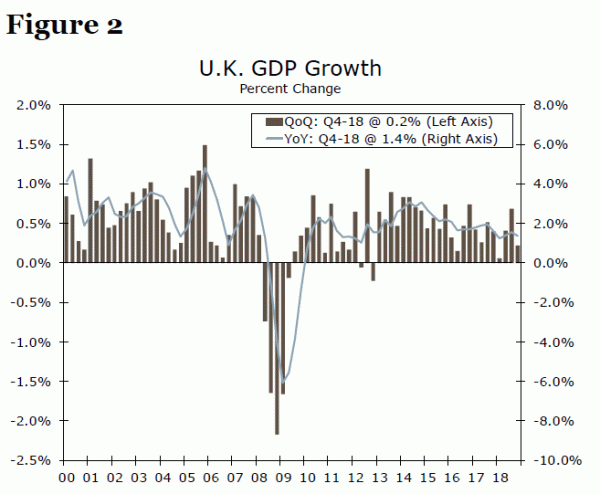Executive Summary
Recent U.K. economic data have seemingly been boosted by firms stockpiling in preparation for a no-deal Brexit. The problem with stockpiling is that it reduces the need for future production, and thus a potentially artificially-boosted Q1 GDP reading could be followed by a weak or even negative Q2 GDP print. Amid these inventory dynamics and given that Brexit uncertainty is dragging on longer than we envisaged, we are cutting our U.K. GDP forecasts, but making no changes to our Bank of England forecasts for now.
U.K. Macro Data Boosted by Brexit Stockpiling—Beware the Snapback
The U.K. economy has been surprisingly resilient despite uncertainty around Brexit, at least when the data are taken at face value. GDP rebounded in January with a 0.5% month-over-month gain amid strong manufacturing output, while retail sales beat expectations with solid gains in the first two months of the year. Meanwhile, data released today showed the U.K. March manufacturing PMI jumped to 55.1, the highest in nearly a year, even as the March 29 Brexit deadline was looming. What gives?
The U.K. manufacturing PMI release offers some clues. It notes that March was a record month for inventory building as manufacturers prepared for a potential no-deal exit from the European Union, activity which also boosted output and employment in the sector. The first takeaway is that this stockpiling activity will likely boost Q1 GDP, and we see upside risks to the current consensus estimate for U.K. Q1 GDP of 0.3% month-over-month (the data is not released until May 10). Beyond the first quarter, however, we see more downside risks for U.K. GDP. In the unlikely event the U.K. leaves the European Union without a deal on April 12, stockpiling among firms is unlikely to do much to cushion the impact on the U.K. economy, which would likely be sharply negative. In the more likely event that the U.K. avoids a no-deal exit, the unwinding of the inventory build should also be a negative event for the U.K. economy—albeit a much less significant one than a no-deal exit—and in turn a downside risk for the pound. With inventories already built up among firms, the need for future production is lessened, while firms could also resort to discounting current inventory in an effort to unload it and in turn see margin compression. To be sure, resilience in U.K. economic activity may not entirely be a function of Brexit stockpiling. Retail sales data suggest solid consumer demand, but the question will be whether this demand continues into the second quarter and whether it offers any offset to the potential inventory drawdown after the first quarter.
In part due to these inventory dynamics, but also in response to the prolonged uncertainty of the Brexit process, we are downgrading our forecasts for U.K. GDP. We now look for U.K. GDP growth of just 1.3% in 2019 (down from 1.5% previously) and 1.4% in 2020 (down from 1.5% previously). Meanwhile, we still look for just one rate hike from the Bank of England this year in August.













